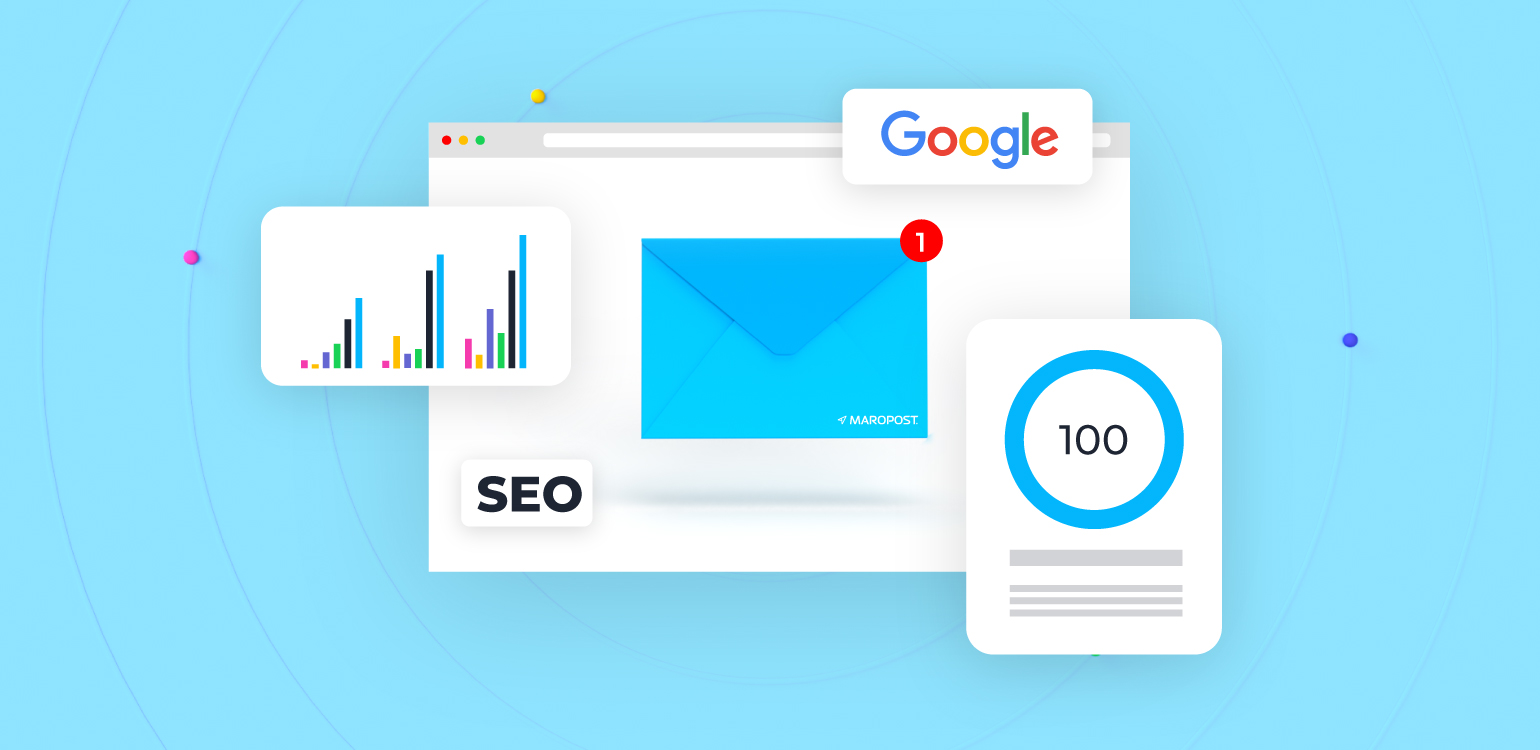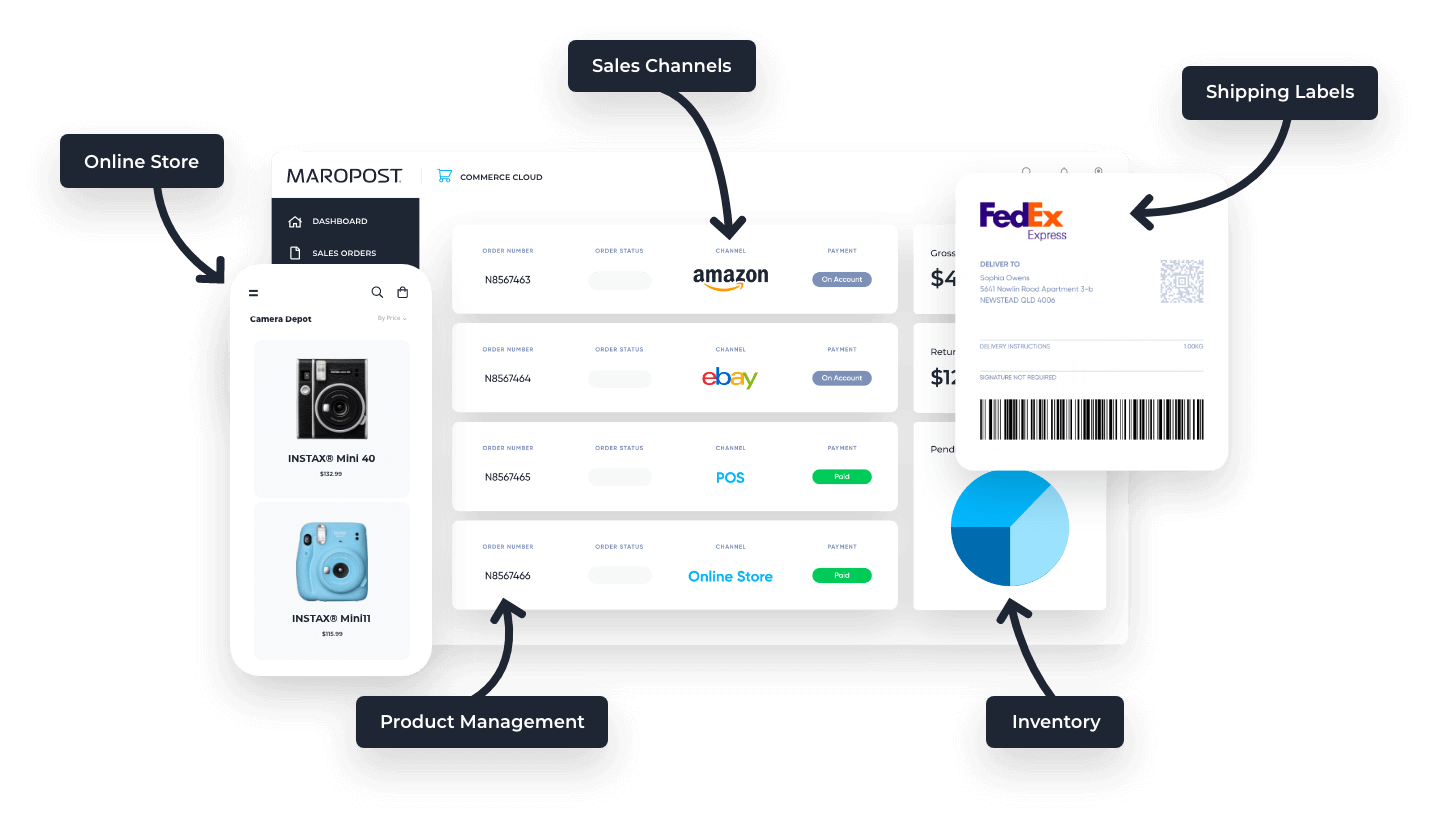Search engine optimization (SEO) and email marketing are two cost-effective yet highly effective Content Marketing strategies that ensure our content reaches its target audience.
Together, SEO and email marketing campaigns improve our website ranking on the search engine results page.
There is no apparent connection between email marketing and search engine optimization, but they both have one goal: delivering our products or services to our target audience.
It is up to digital marketers to build the bridge between SEO and email marketing in their Digital Marketing strategy.
We’re going to explore how digital marketers can combine SEO and email marketing to increase brand visibility and rank higher on Google organic search results.
This article will cover:
- SEO background
- How email marketing supports SEO
- How to combine SEO and email marketing for better ranking on Google organic search results
SEO Background
Google is the most popular search engine. Search engine optimization best practices clear obstacles and build bridges for search engines to discover and understand our website.
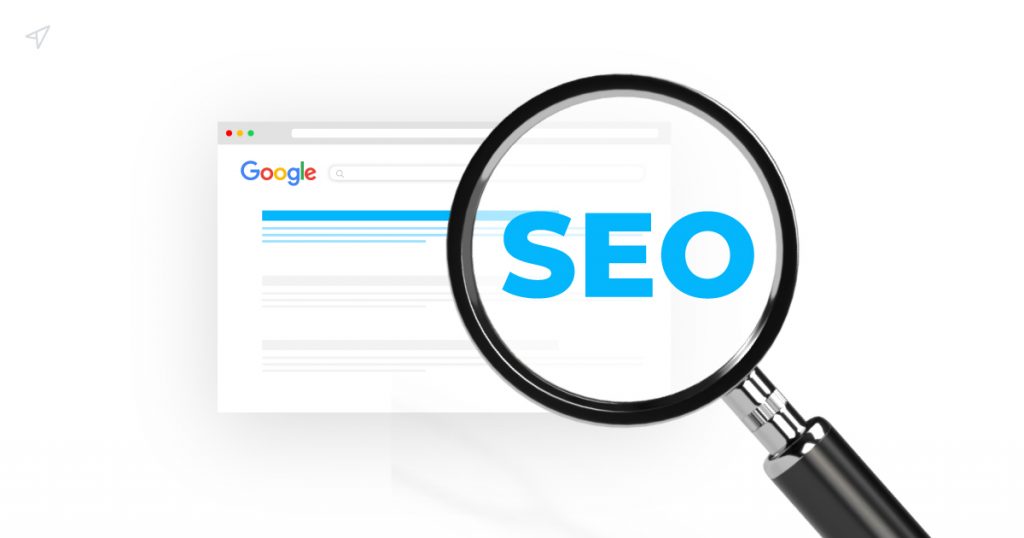
Consider SEO as improvements that, combined with other optimizations and the search engine’s intelligence, refine our website visitor’s experience.
How Google Gets Information from Web Pages
Google uses web crawlers to go through known pages and discover new or updated URLs. The search engine does not have a central database. The web crawlers are automated programs that constantly crawl web pages looking for any changes.
- Google finds information by following links from pages that Google already knows in a process called crawling. This is why building links is a rewarding step in SEO. Google recommends that a new website owner submits the sitemap or new URLs to Search Console for Google to crawl the web pages.
- After discovering a page, Google analyzes its content to understand the page and stores the information in Google’s index. This process is called indexing. Technical SEO for meta tags, titles, images, videos, and keywords makes it easier for Google to crawl and index a website. Crawling and indexing happen before a user submits a search query.
- When a user searches for something, Google looks for the most relevant content based on the search query to deliver the best possible user experience.
Google recommends that we put different topics on different pages and similar topics on one page.
This gives keyword research high importance because web crawlers look for keywords and related keywords that match the user query.
Google ranks content on the SERPs based on its relevance and other factors that promote user experiences, such as mobile responsive design, fast loading pages, and website accessibility.
But even with the best SEO practices, a single search engine results page will only accommodate about ten domains.
A study by Sistrix found that the top search engine result received a 28.5% click-through-rate which gradually dropped up to 2.5% CTR for the tenth result on the first search engine results page.
Moz’s previous CTR survey found that the first search engine results page received 71.33% CTR while the second and third pages received a 5.59%. The rest of the population might have tried a different search or abandoned the search.
With such intense competition for the top 5 organic listings, a marketer’s best bet is to specify and target website content to the right people. That’s where email marketing comes in.
Email marketing delivers high-quality content to subscribers’ inboxes, cutting out all the competition. A study by eMarketer found that email marketing gives back a 122% return on investment.
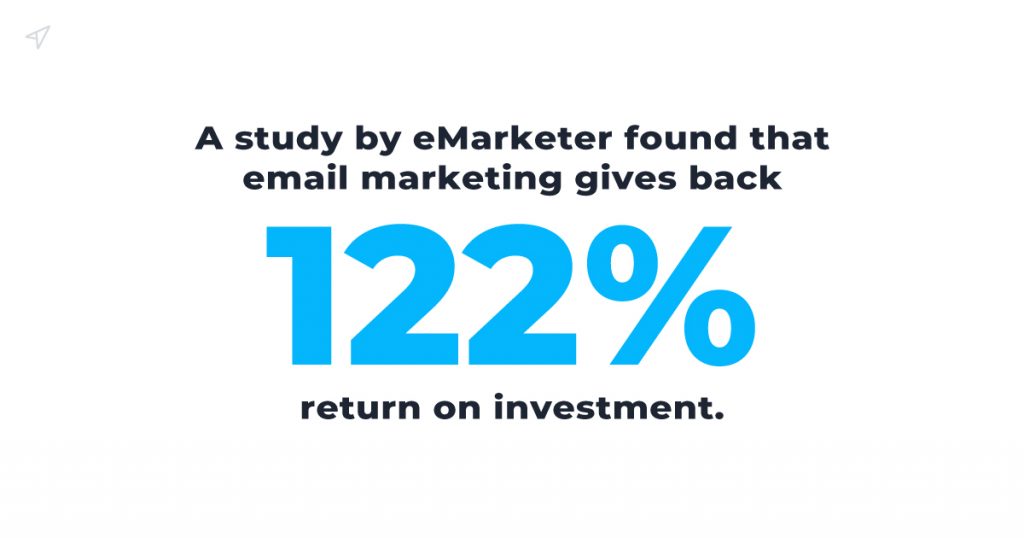
How Email Marketing Supports SEO
Email marketing nurtures a direct relationship with customers and prospects by sending them high-quality and relevant content.
With an effective email marketing strategy, a team, and a mailing list, you can convert prospects to buyers, build long-term relationships with customers and drive high-quality traffic to the website.
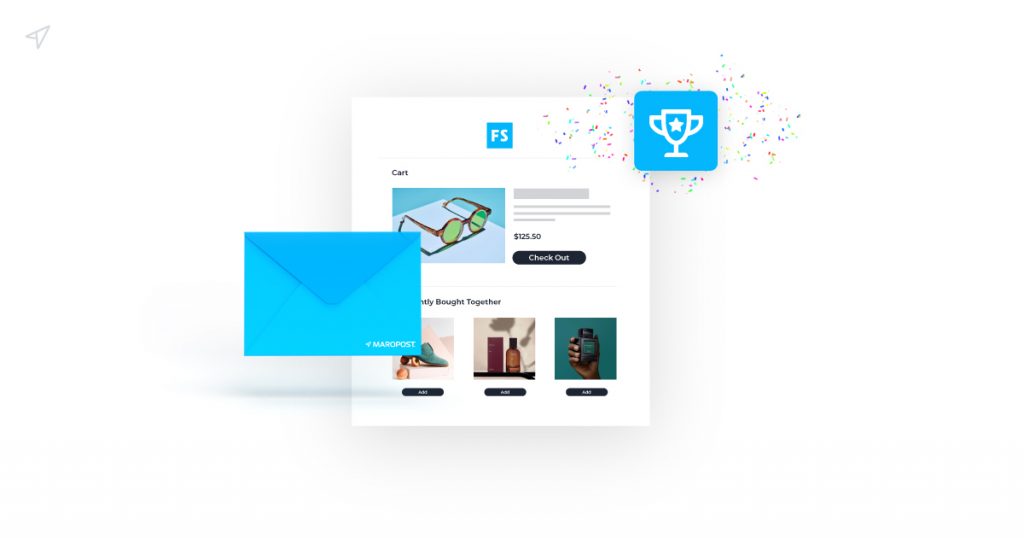
High-quality traffic from email marketing drives off-page SEO.
High-quality traffic is the users who are very likely to follow through a call-to-action (CTA), e.g., subscribers who will easily open an article link.
Though search engines do not crawl or index the emails we send, email marketing boosts the website’s ranking by encouraging beneficial user behavior like sharing, commenting, liking, and exploring other website pages.
Such positive user behavior improves your website ranking on Google search results.
How to Combine SEO and email marketing for better ranking on Google search results
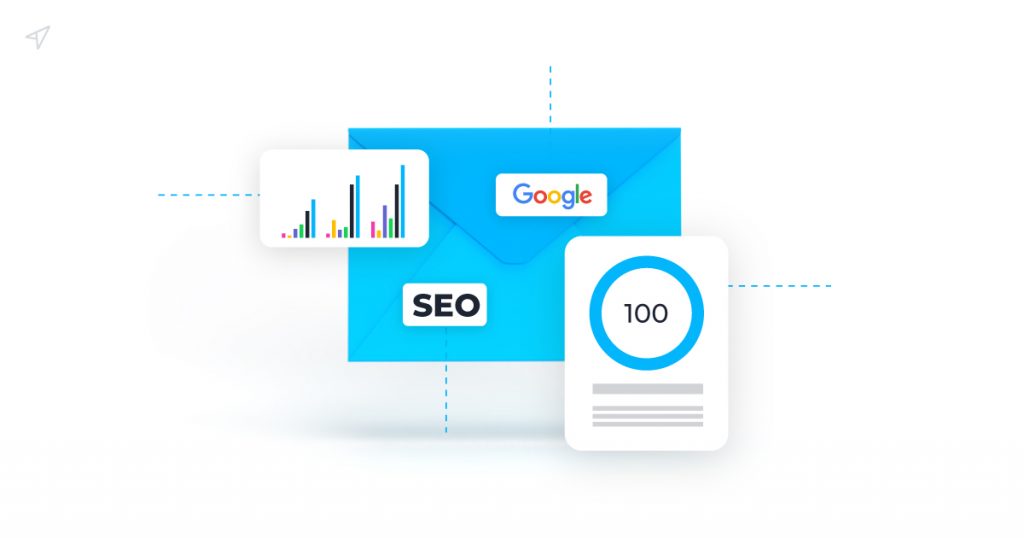
Segmentation
Abandon generalized email blasts.
When we speak to everyone, we end up speaking to nobody, which means no conversions. Segmenting an email list is the success secret of successful email marketing.
Segmenting an email list is when we categorize our subscribers according to their interests and craft our content with each group’s interests in mind. A segmented email campaign speaks to each of our subscribers by delivering precise content specific to their needs.
Mailchimp surveyed their users who segmented email lists and those who didn’t. The survey found that segmented email campaigns had a 14.1% higher opening rate and 100.95% higher click-through-rate than non-segmented email campaigns.
We think we know what our customers want until we find out that we don’t. Johnny Cupcakes, an apparel retailer, could never agree more.
With an impressive 80,000 subscribers email list and weekly blast emails, their email campaign was just stagnant. But by simply segmenting their email list by gender, Johnny Cupcakes witnessed a 123% increase in conversion rates. See Johnny Cupcakes story here.
Johnny cupcakes sample of the male segmented email.
Source: MarketingSherpa
How to Segment an Email List
To give our subscribers content that they need and want, we need their data. We can acquire user data from the email’s profile, subscriber’s social media, or using third-party email marketing apps.
Alternatively, we ask for user data using surveys and questionnaires delivered in their inboxes.
Email marketing apps make things so much easier, with automatic sorting and segmentation. But without an app, here’s how to go about it.
Gather information about the subscribers from their social media profiles (this is what Johnny Cupcakes did). Determine their gender, location, preferences, interests, and purchasing habits. With customer data, you can base your segments on any or all categories. You can also create separate email campaigns for new users and old users.
After gathering information, you can create a buyer persona, and define the goals for each group.
Then, you craft content that will drive sales for products that each persona will want and send them to each category.
Email Digests
An email digest is a personalized summary or combination of a couple of previous emails sent within a set timeframe (e.g., weekly) or after reaching a set volume (e.g., 20 emails).
In the email marketing context, an email digest is like a newsletter containing a series of published blogs.
Source: Next Draft Email Digests
Subscribers can easily access a compilation of articles that are relevant to their preferences. When they engage with the content, they boost our brand’s reputation as a valuable resource.
How To Create An Email Digest
To get started with an email digest, we need an email digest template and an email marketing app.
Email digests are compiled and sent automatically using an email marketing app, such as Maropost, to give subscribers an overview of the recent significant email they could have missed.
To avoid bombarding your subscribers with a long email digest, choose only high-performing and relevant emails.
An email digest could be a single column, two-column, or three-column, each featuring text and images. A single-column email digest is best for mobile and tablet users. But some brands mix up different column digests.
Another easy option is a text-based email digest with no images. Excellent performing email digests are very personalized and are not filled with promotional messages.
You can use the subscriber’s name and location in the subject line.
Post Newsletter Content In The Website
Search engines don’t crawl emails, but you can make them crawl your newsletters by posting them on your website.
Simply create a newsletter archive where you repurpose the emails to become website content. That way, site visitors can see what content they miss out on by not subscribing.
When you mention that the content is usually exclusive to subscribers, you have the chance to grow our mailing list because people don’t like missing out.
A big mailing list means increased brand awareness and visibility on Google search results.
Archiving newsletter content also reduces the attrition rate (like losing subscribers) because subscribers know what they signed up for.
But before posting, you have to make necessary optimization adjustments like restructuring keywords, correcting errors, and adding the canonical tag.
How to Add the Canonical Tag
The canonical tag guides search engines to index the right pages when we have pages with similar content, like a blog post and newsletter archive. Without a canonical tag, Google search decides which page to index between similar pages.
Embed: https://youtu.be/WOmWUZczvyQ
Use Long-Tail Keywords in Emails
Long-tail keywords are more specific and relevant to user intent than short-tail keywords. Long-tail is more memorable and closer to the everyday street language.
Consider a user reading an email about an upcoming entrepreneur’s webinar while she is working. She will likely postpone registering for the webinar, however relevant the webinar may be.
But when she is finally free, it will be easier for her to search for the webinar on Google than through her cluttered inbox. She will likely Google something in the lines of “X Company’s upcoming webinar for entrepreneurs in March 2021.”
If her search phrase captures some of our long-tail keywords, finding the content will be a breeze.
If your email marketing campaign aims to increase on-site engagement (which improves your websites’ ranking), don’t leave anything to chance!
Use a compelling call-to-action (CTA) to ask your subscribers to comment on the blog. Also, encourage them to share by having social media links at the footer of the email.
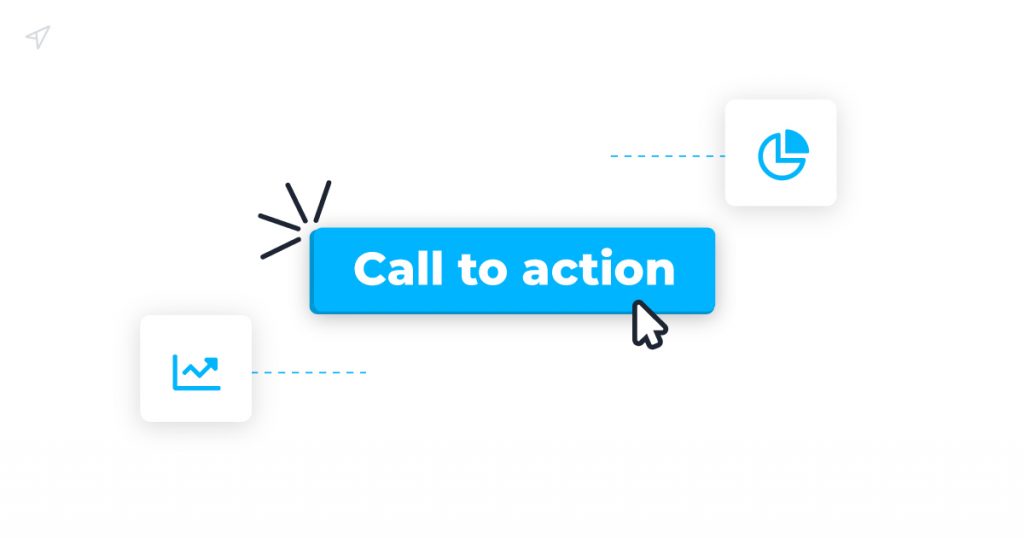
You only need to create actionable and exciting content that will pique your reader’s interest and start a conversation.
Use Urchin Tracking Module (UTM) to track performance
The UTM is an analytics module for measuring your email marketing performance. UTM is a tracking code that you place at the end of each URL in the email marketing.
An example of UTM parameters
Source: Polka Dot Data
Though UTM has its limitations (like misrepresentations after cross-platform sharing), it gives digital marketers an idea of where the link’s traffic came from and how much traffic.
Different UTM parameters track different aspects of your email marketing strategy.:
- UTM Source (e.g. utm_source = newsletter). Tracks the source of the link.
- UTM Medium (e.g. utm_medium = email). The medium for sharing the link.
- UTM Campaign (e.g. utm_campaign = blackfriday). This is the name of the campaign.
- UTM Content (utm_content = sidelink ). This shows where the link appears.
To get a useful UTM report, connect your UTM to Google Analytics or CRM tools to see the ROI.
Purchased email lists are an easy way to land in the spam folder. For best results with your email marketing campaigns, only use organic traffic. That means that all your subscribers opt-in to your mailing list voluntarily.
Opt-in mailing lists are also easier to track performance and return on investment which drives business decisions.
Are you ready to boost your rankings? Use these tips and leverage your SEO strategy with the help of email marketing!
Need to chat about your email marketing strategy?
More than 10,000 marketers use Maropost to engage with their prospects and customers through emails, SMS, social media and more. We’re here to help you growing your business!
Chat Now
